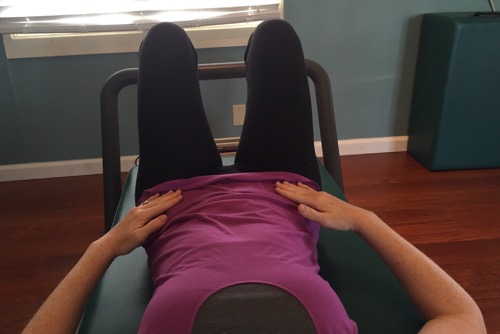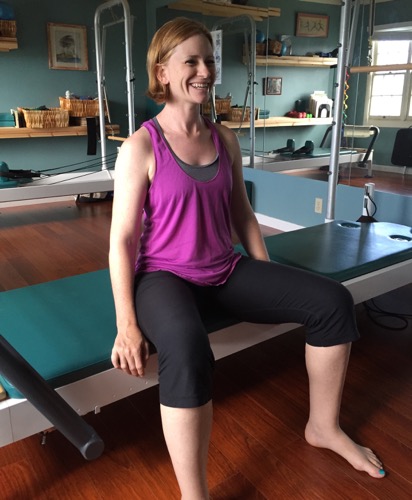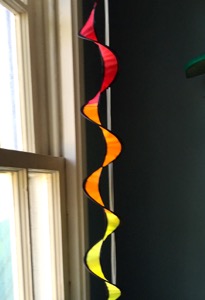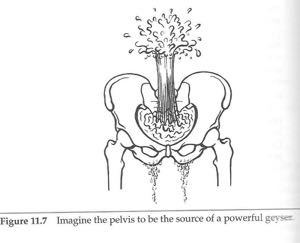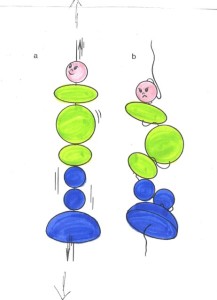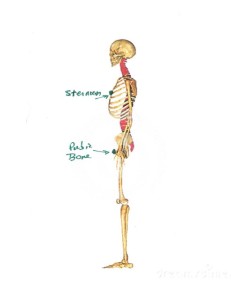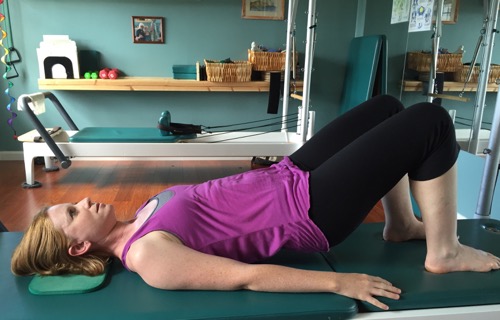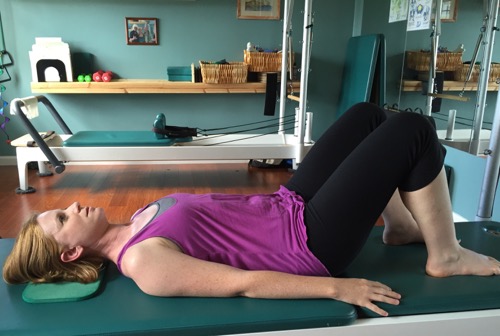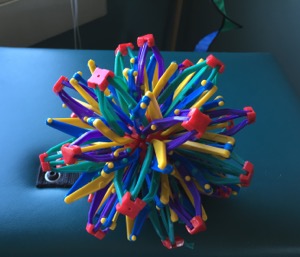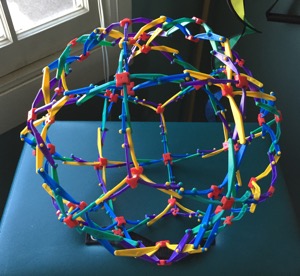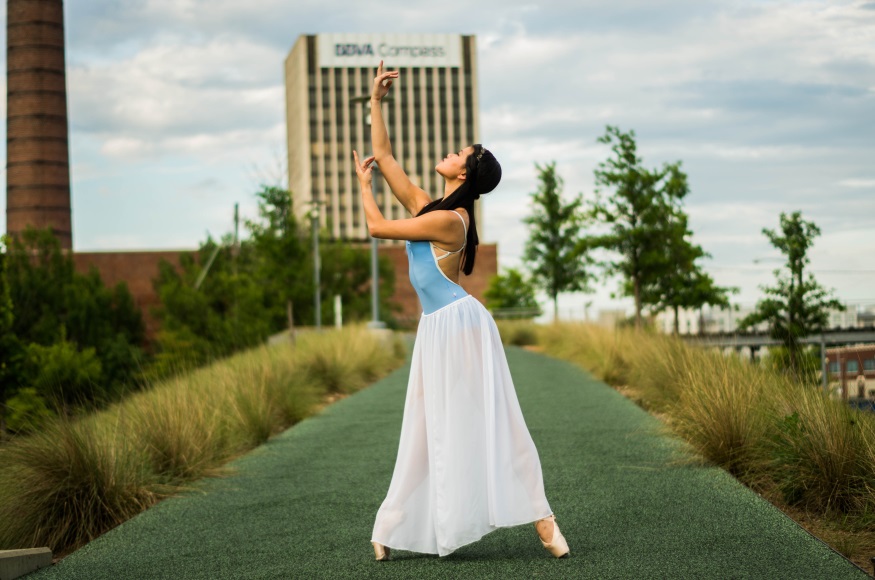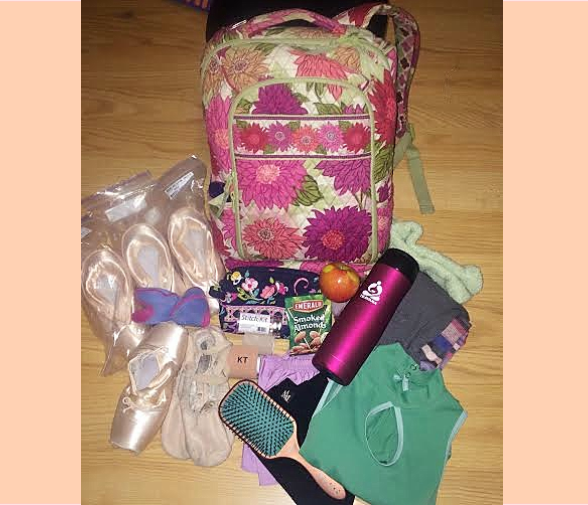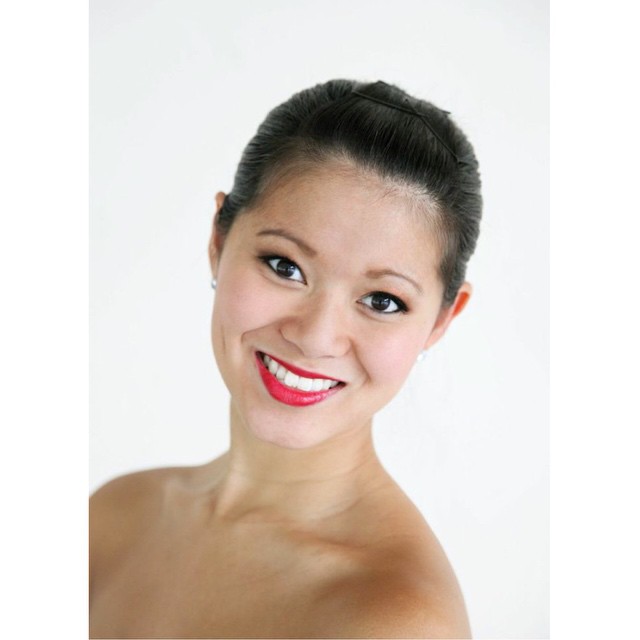by Jan Dunn, MS
Welcome to part three of our “core control series”! If you’ve missed the others, you’ll find part one here, and part two here. Enjoy!
Core Exercises
Now we are ready to actually do some “core” exercises! This one actively involves the TA (transverse abdominal) that we discussed in Part 1 – but remember that “core” really means back stabilization, and these kinds of exercises utilize all of the muscles we discussed in Part 1, even if we’re consciously focusing on only one of them, as in this next exercise.
Lying on your back, in NP, place your hands on your lower belly, as in the photo here:
As you inhale (remembering all your cues above for a nice full breath), feel your belly rise slightly. Now, as you exhale, let your belly fall inwards, away from your hands. Don’t lose your NP as you do this–the whole point of the exercise is to use the TA in a NP position, where it is working to best help stabilize your back. Many dancers (and non-dancers) want to flatten their back / lose NP when they first try this – so watch out for that!
It’s also important not to “suck your belly to your spine”. The TA doesn’t need to work on 100% contraction (which that cue tends to do) to be effective (in a healthy back, it’s working at only about 30% of it’s full capacity).
This simple exercise is just initial awareness / training for how to activate the TA in a neutral position. If it’s easy for you, great. If not, and you find yourself wanting to “tuck” / flatten your back, then this would be a good one to practice daily, until that habit of “tucking” is no longer there.
Now we’re going to do some back stabilization exercises that may be more challenging (or maybe not!):
But before we do, a few words on the breathing pattern that will best help you with these:
Generally speaking, we stabilize our back best when we exhale with exertion –in other words, the hard part of the exercise. So for example, on the first exercise below, you exhale as you lift your leg.
Another thing to realize about breath use is that a forced exhale actually overuses the oblique abdominals, and does not allow the TA to fully engage. I’ve actually seen this on diagnostic ultrasound, and it was fascinating–when the dancer forcibly exhaled, you could actually see, on the screen, how the TA was not working, but the oblique abdominals were working way too hard (“hypertrophying” in scientific language). So just taking a normal inhale / exhale will serve you best.





